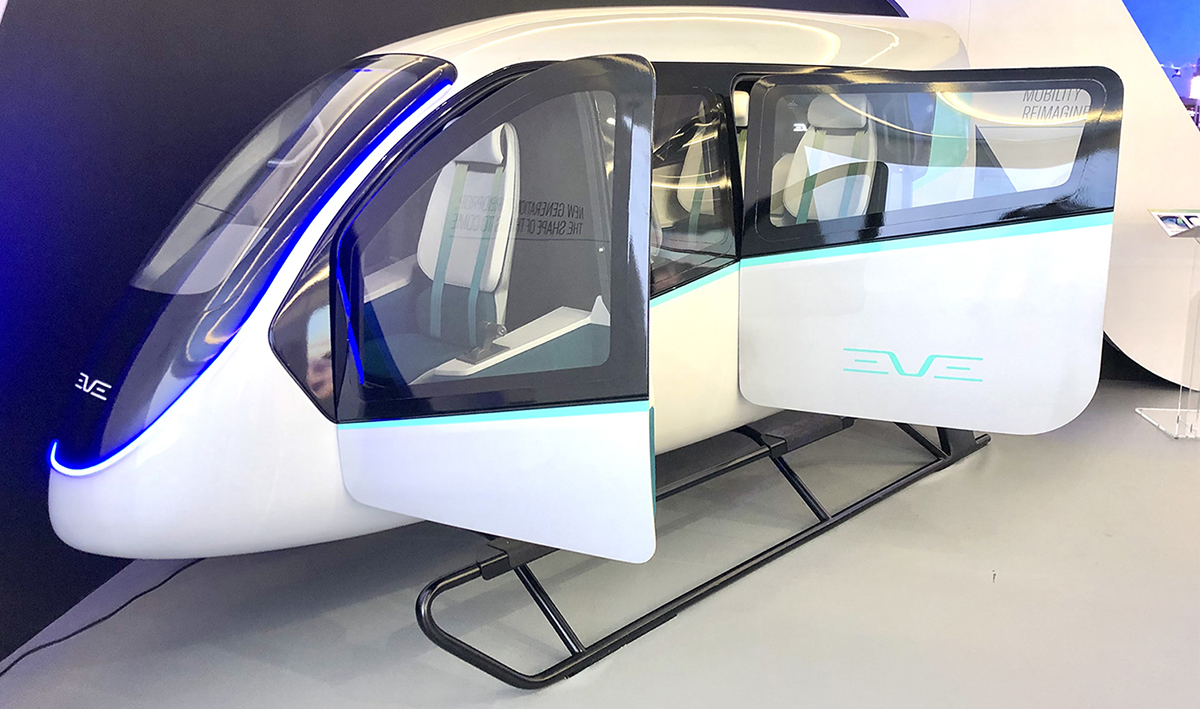Stay Up to Date
Submit your email address to receive the latest industry and Aerospace America news.
A conversation with Hopscotch Air’s Andrew Schmertz
For $2,000, members of New York-based Hopscotch Air’s flying club can book a conventionally powered, five-passenger Cirrus SR-20 or SR-22 plane plus a pilot, on demand, to make the 240-kilometer roundtrip between White Plains and Atlantic City, NJ., or between other cities in the Northeast U.S.
The costs are higher but unpublished for nonmembers, but either way, it is out of reach for many Americans unless they are splurging and splitting the bill.
Dozens of startup companies developing smaller electric aircraft have promised to slash such costs and match the cost of a ridesharing trip in a car either local or regional trips. Regional airlines have expressed interest in and invested in these developers. For example, Republic Airways and SkyWest announced in late 2021 their intention to buy up to a combined 300 of the 100-kilometer-range aircraft Brazil-based Eve Air Mobility plans to introduce commercially in 2026.
So, I spoke with Hopscotch’s co-founder and CEO Andrew Schmertz to see what he thinks about such aspirations.
Schmertz is also a marketing consultant for Boston company Transcend Air, a startup that is developing a gas-powered, tiltwing vertical takeoff and landing aircraft, the VY 400. He says he is tracking the development of electric aircraft for possible inclusion in the Hopscotch fleet.
“We are looking at regional air mobility, and as these new [electric] models come into play, Hopscotch is well-positioned to adopt and adapt them into the operation,” Schmertz says. “We don’t have to build, from the ground up, a whole new airline like some are considering.”
Schmertz says he admires anyone attempting new ways of doing things in aviation and he’s not critical of such efforts, but he believes battery-powered aircraft that can travel more than a couple dozen kilometers will not be commercially available for many years.
Schmertz says he is also interested in the potential to convert some of Hopscotch’s existing fleet to electric. For example, he says Hopscotch has had conversations with Seattle-area company Magnix, which is developing electric powertrains that could be used to convert fossil fuel-powered planes.
But he says he will only be interested “when the battery power gets a little bit better than it is today.”
At some point, though, he believes Hopscotch’s fleet will be a mix of electric and conventional aircraft.
“It is possible that Archer and Lilium and all the others are going to get there. But the naysayers, the critics would say there’s simply no evidence that they’re making that progress toward commercial operations,” Schmertz says.
Besides the batteries, he says infrastructure and regulatory hurdles are likely more serious challenges than the industry cares to admit publicly.
“It’s not like the hybrid and electric cars were,” he says. “The batteries in a Tesla, when they stop, you just stop on the road. But an aircraft is forced to land or fall out of the sky if the battery goes dead.”
Regional airlines are paying attention to the possible benefits of electric aircraft, but they are also deeply concerned about a shortage of pilots in recent years, says Drew Jacoby Lemos, senior director of government affairs at the Washington, D.C.-based Regional Airline Association.
“The new technology is very promising. I think the prospect of reduced operating costs for electric aircraft is very appealing, and the regional industry is committed to reducing carbon emissions,” Jacoby Lemos says. “However, the limiting factor for small community air service is the availability of pilots, and this will continue to be the case into the future regardless of the benefits and savings associated with electric aircraft.”
Get the latest news about advanced air mobility delivered to your inbox every two weeks.
About paul brinkmann
Paul covers advanced air mobility, space launches and more for our website and the quarterly magazine. Paul joined us in 2022 and is based near Kennedy Space Center in Florida. He previously covered aerospace for United Press International and the Orlando Sentinel.
Related Posts
Stay Up to Date
Submit your email address to receive the latest industry and Aerospace America news.





